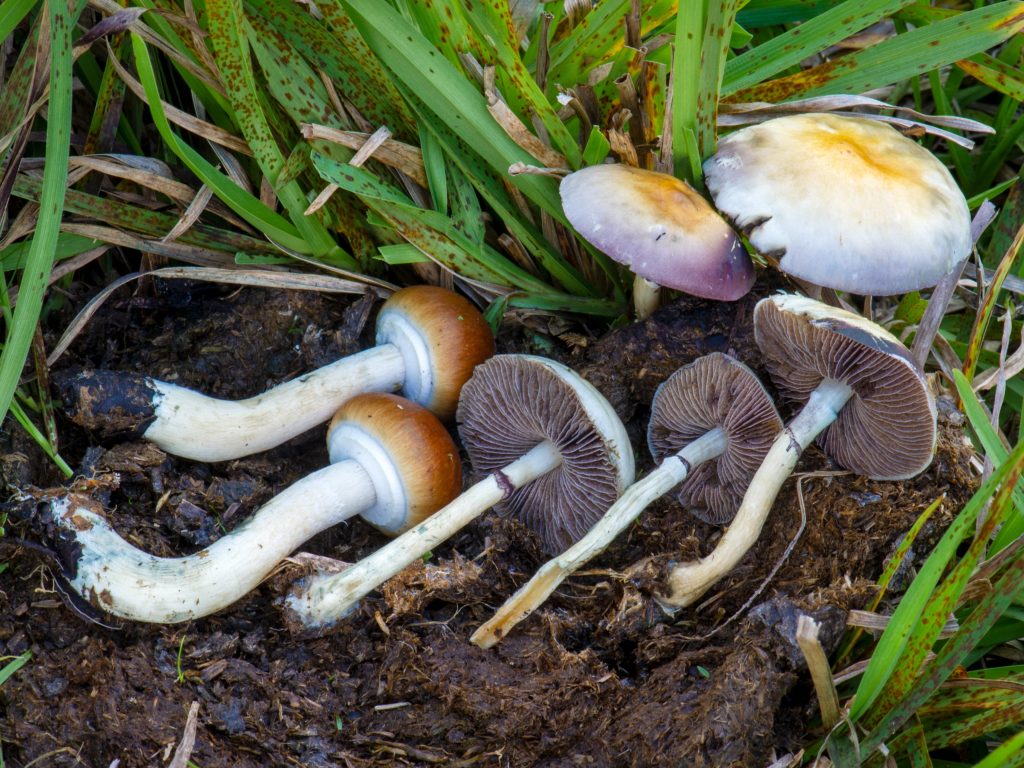- Oregon officials are leaning towards one type of 'magic' mushroom to legalize in 2023 for therapeutic use.
- The state is set to become the first to legally role out psilocybin, the active compound in "magic" mushrooms.
- Experts told Insider that Psilocybe cubensis, the chosen species, is the most widely cultivated.
Oregon is on track to become the first US state to role out legal psilocybin, the psychoactive substance found in "magic" mushrooms. Officials are now tentatively planning to green-light one particular species of "magic" mushroom for therapeutic use in the state starting in 2023.
Lab-made psilocybin, alongside therapy, has shown promise in clinical trials for the treatment of severe depression.
Jessie K. Uehling, a mycologist and member of Oregon's Psilocybin Advisory Board, told Insider that Oregon is focusing on a species called Psilocybe cubensis because it's widely cultivated and easy to grow.
While almost any species of magic mushroom can be grown, Psilocybe cubensis in particular grow very fast with "pretty good yields," said Alan Rockefeller, a mycologist based in Oakland, California.
Unlike a handful of other "magic" mushroom species, including those that grow in the Pacific Northwest, Psilocybe cubensis isn't associated with wood-lover's paralysis, according to Uehling.
Wood-lover's paralysis is the name of an anecdotal condition in which people say they have been temporarily paralyzed after eating certain "magic" mushrooms that tend to grow on wood.
Not every mushroom expert agrees with Oregon's decision to hone in on one "magic" mushroom species.
Rockefeller told Insider that he believes people should be able to choose which species they take.
"Out of about 200 mushrooms, there's maybe four of them that cause wood-lovers paralysis," he said.
"I think the Oregon thing is still good. But if I was in charge, I wouldn't have restricted it to just one species," Rockefeller, who is not on Oregon's advisory board, added.
No matter the species, growing "magic" mushrooms is relatively cheap.
"It costs about the same amount to grow psilocybin mushroom as it does to grow the mushrooms you see in the supermarket," Rockefeller said, referring to all "magic" mushroom species.
Poisonous look alikes
Draft rules for legalization allow people in Oregon to consume Psilocybe cubensis as whole mushroom, a powdered product, or an extract.
Mycology, the study of fungi, is a relatively young field and there isn't enough data on all psilocybin-producing fungal species to design the necessary tests to tell between different species, Uehling said. But companies will probably emerge in the state that have licenses to sell legal psilocybin-producing mushrooms.
The experts said generally people can identify 'magic' mushrooms by looking at them, unless it's in a powder form. They can also tell the difference between a poisonous mushroom and one that's safe to consume.
"When you grow a mushroom, you only put one culture in there, so you know what you're growing because you know what you put in there. It's not like you're going to accidentally grow something poisonous," Rockefeller said, adding that a poisonous mushroom would look different. "By looking at it, you can tell that it's moldy, in the same way you would look a bad apple and be like, no, I'm not eating this one."
All the experts Insider spoke with warned of poisonous lookalikes in the wild, though.
"If you do go foraging, just be careful. There are poisonous lookalike mushrooms out there in the environment. There are resources out there available online," Caine Barlow, a mycologist in Australia, said.

